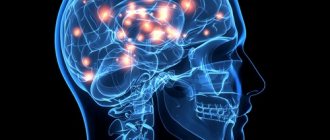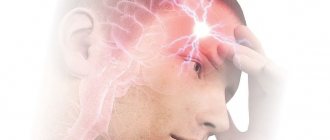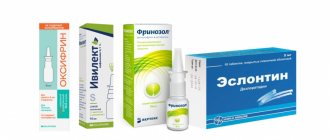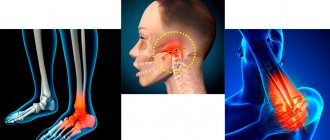Many therapists, cardiologists and endocrinologists call vegetative-vascular dystonia (synonym - neurocirculatory dystonia) the most common disease, which occurs in almost every second person. But in the International Classification of Diseases, the main document for doctors, there is no such diagnosis. You won’t find it in the records of doctors who work outside the CIS.
It turns out that there is no such disease. But many people experience very real symptoms of VSD. Where do they come from? And what to do if you have been diagnosed with VSD?
Etiology
The main cause of the syndrome is hereditary predisposition. In addition, there are pathogenetic factors that cause a functional disorder of the autonomic nervous system:
- in children, the disease can be triggered by intrauterine hypoxia of the fetus, birth injuries, stress that the mother experienced in the first months of pregnancy;
- in adolescents, VSD is formed under the influence of endocrine disorders, physical inactivity, chronic diseases, emotional stress, and conflict situations;
- in adults, the onset of pathology is caused by excess weight, hormonal changes, injury to the brain or spinal cord, severe one-time stress, being in a state of prolonged nervous tension, osteochondrosis of the cervical spine, mental and physical fatigue, regular lack of sleep, infectious diseases of the respiratory system and brain, bronchodilators, oral contraceptives and a number of other negative stimuli.
The female half of the population suffers 3 times more often from vegetative-vascular dystonia due to hormonal changes in the body during pregnancy, immediately before childbirth and at the stage of decline in the function of the reproductive system.
Stages of dystonic crises
People suffering from VSD experience a sharp deterioration in their condition during the off-season.
Stages of exacerbation:
- Nervous tension gradually increases, accompanied by sudden mood swings and inexplicable fear.
- The condition is aggravated by additional manifestations: gastrointestinal dysfunction, increased blood pressure and temperature, tachycardia, increased headaches.
- It is difficult to focus the gaze, dizziness occurs against the background of other symptoms.
It is advisable to stop the condition at the first stage, so as not to start a disease that will subsequently require serious drug therapy.
Symptoms of the disease
In infants, exacerbation of VSD is accompanied by frequent regurgitation, loss of appetite, and excessive accumulation of gases in the intestines. Older children complain of lack of air, headaches, and digestive disorders. They more often show a tendency to conflict behavior, whims, and colds.
Comparison of common symptoms of VSD helps to diagnose the disease in adults and children. Their list includes:
- increased fatigue;
- disturbance of appetite and functions of the digestive system;
- frequent urination;
- shortness of breath, lack of air;
- tachycardia, arrhythmia;
- pain in the heart area;
- increased sweating;
- numbness or feeling of coldness in the extremities, chills.
The disorder is often accompanied by an aggravated reaction to changes in weather factors, restlessness and anxiety, and sleep that does not bring complete rest.
The autonomic system regulates the functioning of all body systems, so the disease can manifest itself as a disruption of the respiratory, cardiovascular, digestive systems, failure of thermoregulatory, dysdynamic, psychoneurological and sexual processes.
To make a correct diagnosis, the therapist needs to obtain the results of echography, electrocardiography, and other hardware studies, and review the results of examination by a neurologist, ENT specialist, endocrinologist, or ophthalmologist.
Sign up for a consultation
Classification of dystonic crises
The main types of exacerbations of VSD:
- Sympathoadrenal. It is characterized by high blood pressure, rapid heartbeat, pain in the chest and temples, and panic attacks.
- Vagoinsular. Accompanied by general weakness, nausea, acute lack of air. Symptoms resolve quickly if the patient rests.
- Hyperventilation. Manifests itself in the form of accelerated heartbeat, panic and lack of air.
- Vegetative-vestibular. It is characterized by the appearance of pain during sudden movements or active sports.
VSD therapy
Complex therapy of the disease includes identifying the cause of VSD and eliminating negative symptoms. At the initial stages, it is recommended to limit yourself to:
- introduction of an adequate work and rest regime, physical and psychological stress, normalization of nutrition;
- to reduce emotional stress by taking medications based on hawthorn, valerian, St. John's wort;
- to activate mental activity by taking remedies based on lemongrass and lure;
- to improve well-being using physiotherapeutic measures:
- general and acupressure massage;
- physical therapy;
- electrosleep;
- water procedures.
Sign up for therapy
Drug therapy plays a significant role in the treatment of moderate and severe forms of the disease. Attention is focused on the treatment of concomitant pathologies and normalization of thyroid function. During crises, B vitamins, sedatives, antidepressants, and drugs to regulate cardiac activity are prescribed.
How to behave during a crisis
During an exacerbation, it is important to maintain a work-rest regime and, if possible, minimize physical and emotional stress. Walk outside for at least two hours a day. In cold weather, avoid hypothermia.
You should pay special attention to food: remove strong tea, coffee, and salty foods from your diet. Introduce more boiled fish and meat, fresh fruits and vegetables into the menu. It is strictly forbidden to consume alcoholic drinks and energy drinks, which will only aggravate the condition.
During a relapse, it is recommended to listen to calm music, which will allow you to relax. Meditation and swimming are effective. The main thing is more positive emotions.
What complications does VSD lead to?
Crisis is the most common complication of the disease. A severe disruption occurs in the function of the autonomic system, which leads to a severe sudden attack.
Based on the type of violation, crises are divided into 3 groups:
- Vagoinsular. A person experiences a feeling of suffocation, heat, sweating increases, the number of heartbeats decreases, blood pressure drops, and often the stool becomes liquid.
- Sympathoadrenal. The patient's limbs become cold and numb, the skin turns pale, body temperature and blood pressure rise, and the heartbeat quickens. Severe chills are accompanied by inexplicable anxiety and a panic attack.
- Mixed. In such crises, the set of symptoms is a mixture of the first and second groups.
If the disease is ignored for a long time, VSD can lead to a decrease in immunity, provoke the development of type 2 diabetes mellitus, heart attack, stroke, cardiomyopathy, and persistent arterial hypertension that is difficult to correct.
Spring Fever
The biorhythms of the human body are inextricably linked with natural ones. In spring, daylight hours lengthen, diet, atmospheric pressure and air temperature change. Even completely healthy people feel changes in their well-being. During this period, some experience an increase in vitality, while others, on the contrary, experience a decline.
In the spring, not only dystonia, but also other chronic pathologies worsen. It is necessary to supplement the body with vitamins to prevent a decrease in immunity.
An exacerbation of VSD symptoms in the spring occurs due to the fact that the body accelerates the functioning of all systems.
Symptoms of spring relapse:
- headache;
- panic states;
- cardiopalmus;
- elevated temperature;
- chronic fatigue;
- pressure surges.
The body, weakened by a long winter, is not able to cope with the accelerated pace of life. The person feels depressed and is unable to perform physical work.
The duration of relapse depends on the condition of the body and can range from a week to a month.
Prevention and its importance
Good restful sleep, a healthy lifestyle, and proper diet help prevent and overcome VSD, even for people with a hereditary predisposition to the disease. In case of exacerbation, the main role is given to rational therapy; in other cases, it is necessary to increase the body’s adaptive abilities by organizing an optimized working day, maintaining a sleep-wake schedule, physical activity and proper nutrition.
Winter crisis
Why does VSD worsen during the cold season? This is due to the fact that short daylight hours additionally deplete the human nervous system. During this period, patients experience melancholy, futility of existence and hopelessness. Prolonged depression leads to the patient losing his sense of reality. Due to the cold weather, people spend less time outside, which causes a shortage of fresh air.
Symptoms of exacerbation of dystonia in winter:
- bouts of despondency;
- choking, difficulty breathing;
- sudden panic attacks;
- tachycardia;
- leg cramps;
- hot flashes, sweating.
Recommendations for symptom relief
If an attack is not stopped in time, it can significantly worsen the quality of life. It is extremely important to strictly follow the neurologist’s prescriptions.
To relieve mild symptoms, patients are prescribed herbal medications.
Valerian tincture has proven itself well. However, the effect can only be achieved with regular use for at least a week.
Drugs are prescribed based on their indications for a particular patient:
- for hypertension - medications that lower blood pressure;
- decrease in body temperature - antipyretic, which contains paracetamol;
- elimination of headaches - painkillers;
- for insomnia - sedatives;
- for arrhythmia - a sedative containing Corvalol;
- hypotonic type – medications containing ginseng.
Aspirin is not recommended for those suffering from dystonia. The drug thins the blood and can cause surges in blood pressure, as well as aggravate chronic diseases of the gastrointestinal tract.
Traditional methods that will help eliminate symptoms
- Aromatherapy will calm your nerves and improve sleep. Baths with essential oils of coniferous trees, citrus fruits, and lavender are especially effective.
- Ginger infusion with honey and lemon will help relieve vascular spasm and reduce blood pressure.
- Medicinal teas containing motherwort, chamomile and mint herbs will help calm the nervous system.
The main thing is not to panic when there is an exacerbation of VSD in adults. Try to pull yourself together, even out your breathing and think about something pleasant. It's better to lie down and rest. It is advisable to undergo an examination once a year. Prevention and proper treatment will help prevent new crises.
First aid for dystonic crisis
Experts note that exacerbations usually occur in the afternoon. This fact is due to the fact that the nervous system accumulates tension during the day, which reaches its limit in the evening.
Mild symptoms can be managed on your own. Soothing herbal tea, taking a mild sedative, walking in the fresh air, meditation, and a light massage will help. The main thing is to relax and breathe correctly, inhaling deeply and exhaling slowly.
Treatment of a moderate crisis requires consultation with a specialist who will prescribe medications to relieve the condition.
Safe remedies to relieve symptoms:
- tincture of motherwort and peony;
- tea based on a collection of medicinal herbs: mint, chamomile, sage, valerian root.
If symptoms are accompanied by severe pain, you should immediately consult a neurologist. The specialist will find out the causes of the exacerbation and prescribe a course of therapy.
For severe symptoms, the following drugs are prescribed for treatment:
- Sedatives (sedatives). Most are made from plant extracts.
- Beta blockers. They turn off the receptors that respond to the release of adrenaline. Prescribed for tachycardia.
- Tranquilizers. They fight anxiety, reduce the frequency of panic attacks, and normalize sleep.
- Vitamins. During a spring exacerbation, it is recommended to take a course of a vitamin complex with omega fats, magnesium, and potassium. It is prescribed exclusively by a specialist.
- Antidepressants. For mood swings, apathy and decreased moral strength.
- Neuroleptics. Prescribed only in severe cases. They effectively relieve nervous system excitability and anxiety, but have a lot of side effects.
- Nootropics. Stimulates cerebral circulation, improves memory and concentration.











